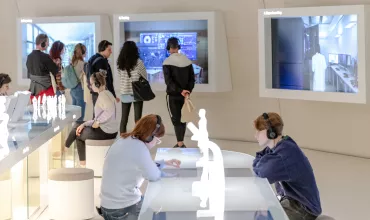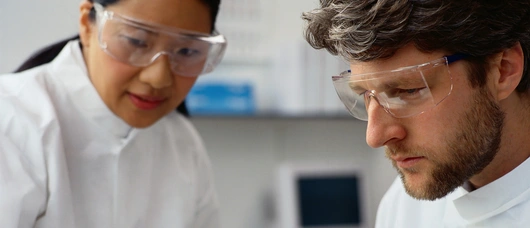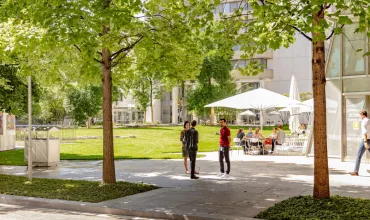Esther Hunziker, «Inside», 2022
Hunziker’s work is based on the dual concept of macrocosm and microcosm. She links microbiology to the macrocosm, from inside humans to the universe (cells/planets, neurons/stars, microbes/asteroids, DNA & proteins/galaxies, electrons/universe). Referring to her background as a fashion designer, the artist describes her work as a tailor-made “dress” for the building.
The artwork of Esther Hunziker will be on display for half an hour at sunset on the designated dates below:
01.11.2025│04.11.2025│07.11.2025│10.11.2025│13.11.2025│16.11.2025│19.11.2025│22.11.2025│25.11.2025│28.11.2025│01.12.2025│04.12.2025│07.12.2025│10.12.2025│13.12.2025│16.12.2025│19.12.2025│22.12.2025│25.12.2025│28.12.2025│31.12.2025
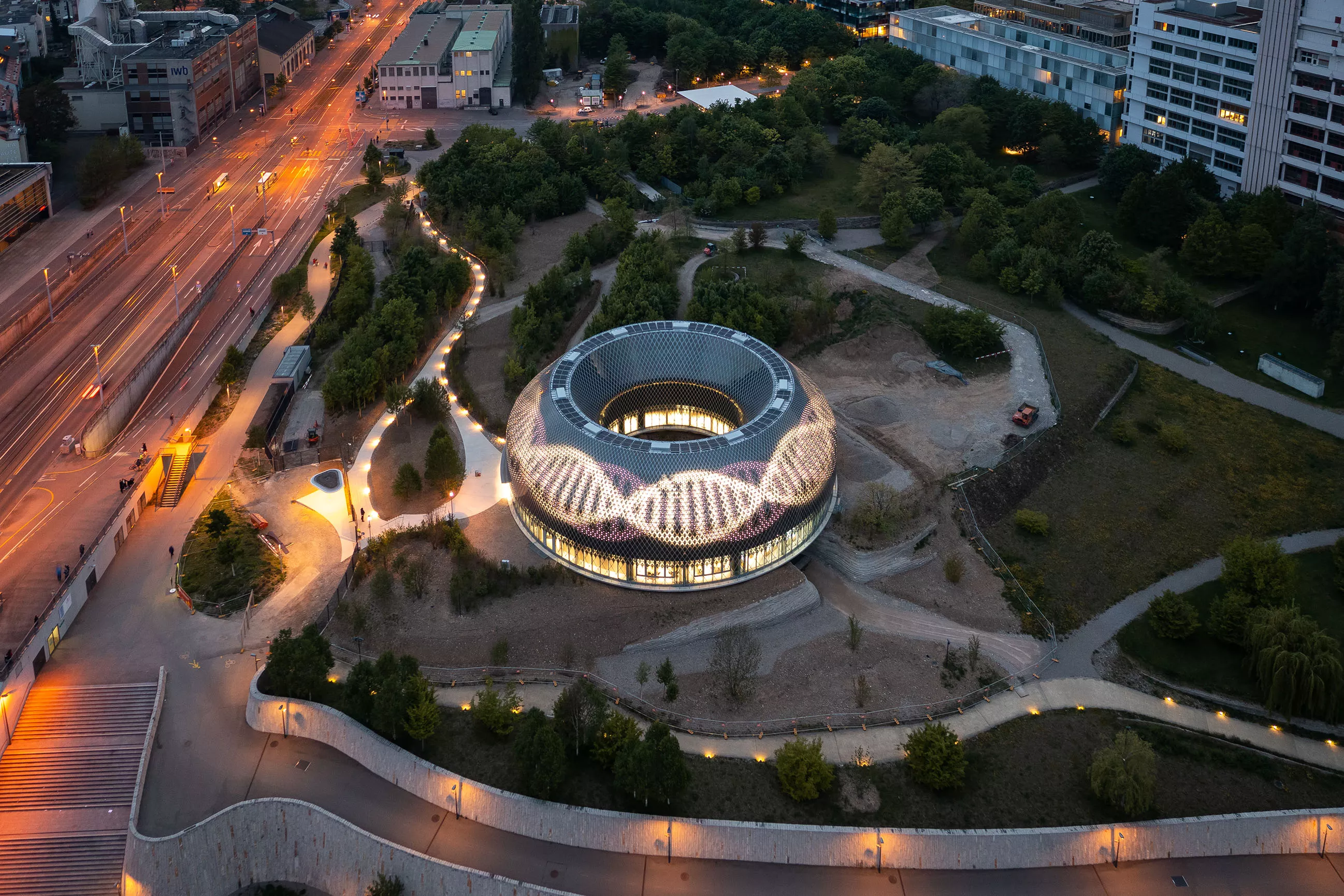
Daniel Canogar, «Oculus», 2022
Daniel Canogar’s work for the zero-energy media façade is a generative abstract animation that responds in real time to climate change data. An algorithm developed by the artist’s studio accesses a series of websites that monitor various phenomena, including polar ice cap melt, carbon dioxide levels, active fire data and global temperature anomalies. The animation is a reference to color-coded graphs traditionally used to track these phenomena; he reinterprets them artistically.
The artwork of Daniel Canogar will be on display for half an hour at sunset on the designated dates below:
02.11.2025│05.11.2025│08.11.2025│11.11.2025│14.11.2025│17.11.2025│20.11.2025│23.11.2025│26.11.2025│29.11.2025│02.12.2025│05.12.2025│08.12.2025│11.12.2025│14.12.2025│17.12.2025│20.12.2025│23.12.2025│26.12.2025│29.12.2025
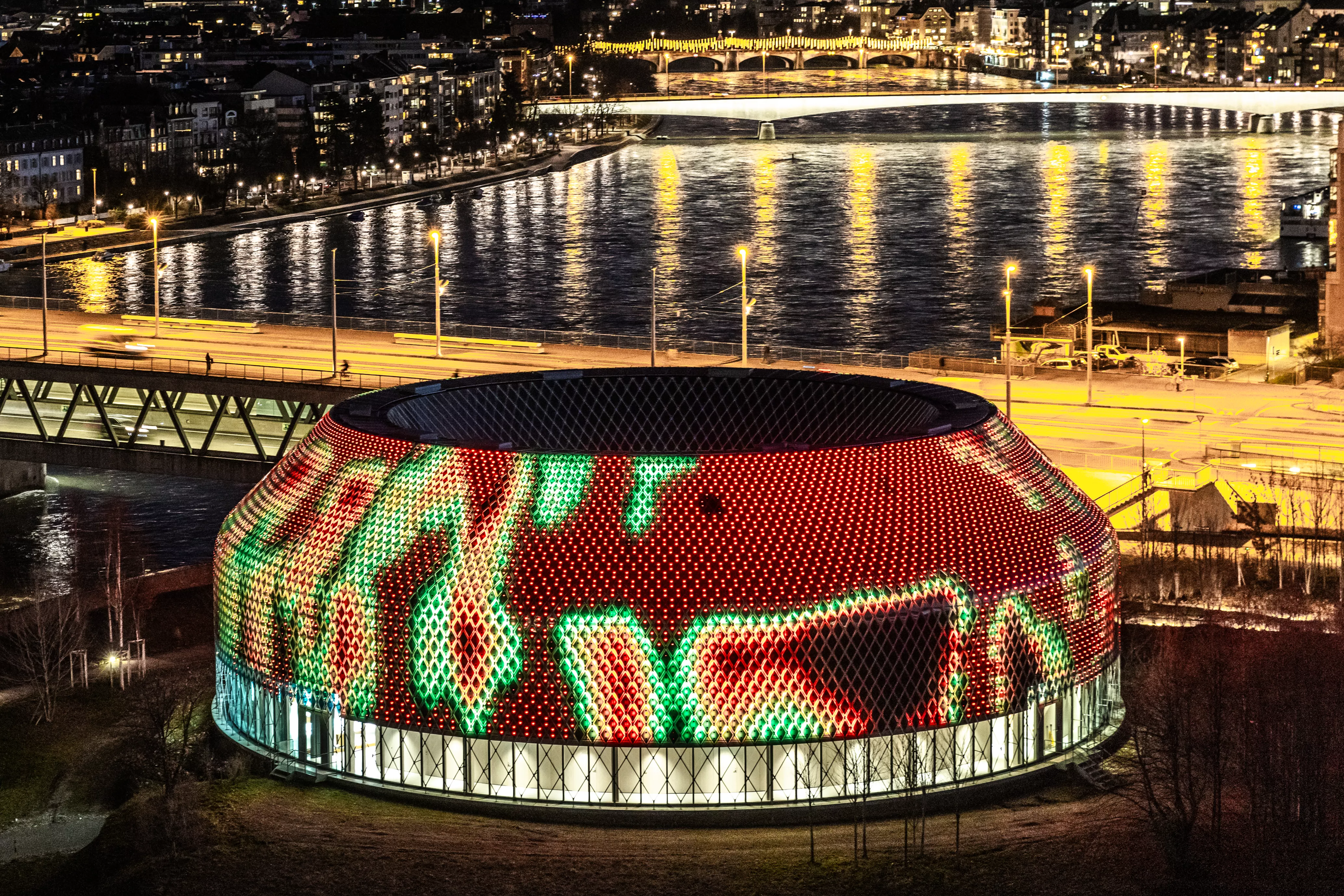
Semiconductor, «Morphogenetic Movements», 2022
The artwork by artist duo Semiconductor for the media façade is a series of real-time generative animations that transform the façade of Novartis Pavillon into a biological, self-organizing system. By generating cell-like forms that evolve from visual noise to legible patterns and back again, the artwork explores self-organization as a contemporary research method applied to biomedical research (and other scientific fields) to create an understanding of how biological entities interact, evolve and function as a system.
The artwork of Semiconductor will be on display for half an hour at sunset on the designated dates below:03.11.2025│06.11.2025│09.11.2025│12.11.2025│15.11.2025│18.11.2025│21.11.2025│24.11.2025│27.11.2025│30.11.2025│03.12.2025│06.12.2025│09.12.2025│12.12.2025│15.12.2025│18.12.2025│21.12.2025│24.12.2025│27.12.2025│30.12.2025

